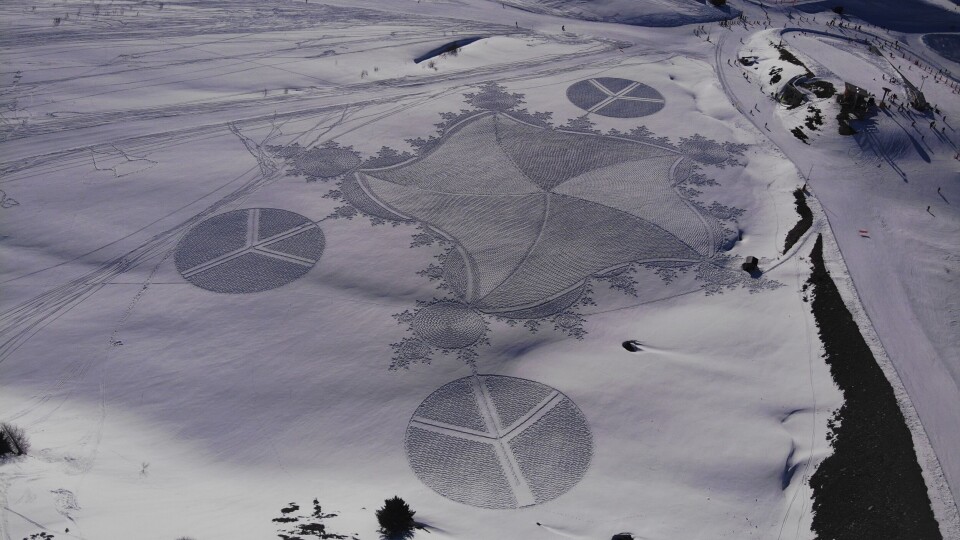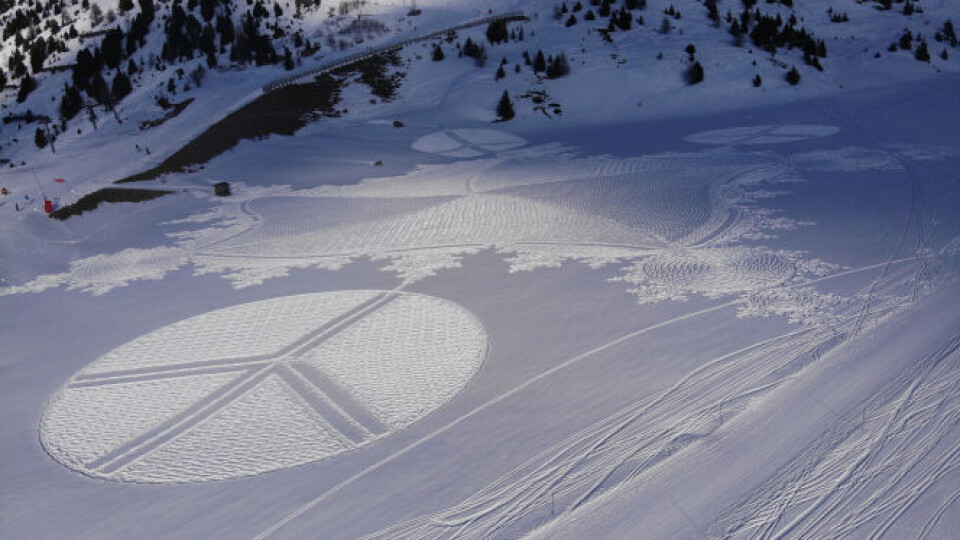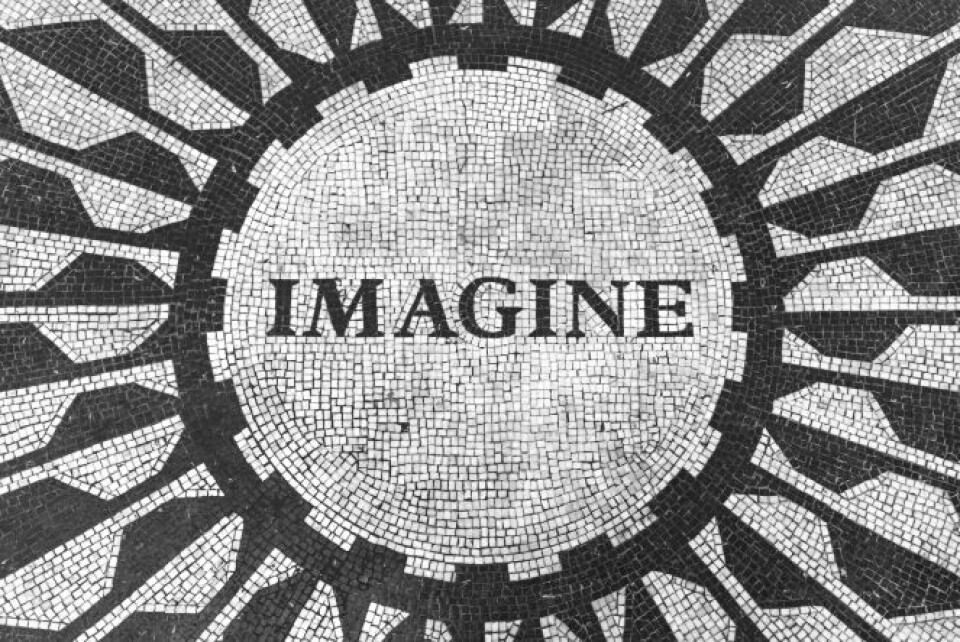-
From English teacher to TikTok star in France: 'The way to help students learn is to believe in them'
Toulouse-based Monsieur Prof's educational videos on learning English are a social media sensation
-
‘The first baby hedgehog we rescued was love-at-first-sight’
We speak to an expert about her hedgehog health centre and how to make your garden more hedgehog-friendly
-
Ballet lessons bring health benefits to over-55s in France
Online classes with the Silver Swans are transforming lives of older adults
Simon Beck: The artist reveals the secrets of his snowshoe drawings
‘When I did my first drawing I was amazed to see how good it looked from a chairlift the next day,’ the former cartographer told The Connexion

We recently reported on the British snowshoe artist Simon Beck, who creates striking, harmonious drawings stretching over hundreds if not thousands of square metres, using just his feet and the virgin snow.
Read more:Watch: British artist creates snow art with his steps in French Alps

We chatted with Mr Beck about the inspiration and techniques that have been channelled into his 377 works of snow art.
Mr Beck studied engineering at Oxford University and spent years working as an orienteering mapmaker. In 1974 he won the British Orienteering Championships.
He started creating snow art in 2004, and has since created pieces all over the world.
When I spoke with him, Mr Beck had just finished his 58th piece on the Lac Marlou (see below), near his home in the Arc 2000 ski area (Savoie).
The drawing, which uses 3D effects to create an impression of snowy cubes rising out of the ground, had taken him until midnight, but Mr Beck said that this was normal for him. He tries to create the whole piece from start to finish in a single session – although some can take two days or more – and so generally works for 10 hours at a time.
‘Like an orienteering exercise’
“About five hours is done in the daylight and then the last five hours are done at night,” he told The Connexion.
“You try to get all the lines done before it gets dark and then it’s just a question of remembering where you are in the drawing.”
Pieces take shape through a four-step process, the final image all planned out in Mr Beck’s mind.
Mr Beck begins with a series of careful measurements tracing the broad contours of the image. “It’s a bit like an orienteering exercise using compass bearings. And then you measure distances by counting steps, like with map-making,” he said.
“The patterns in my pieces obey the laws of mathematics,” creating geometrical designs with beautifully balanced shapes and clean lines.

He will then draw in the remaining lines in a “joining up the dots exercise,” and “then you’ve got the fractals around the edge, which is very time consuming.”
Final shading work – “walking backwards and forwards” – gives the piece its depth and texture, but can be “quite boring”, so Mr Beck will often listen to music to pass the time.
Mr Beck has previously said that he “strive[s] for a connection between my art and the landscape; I strive for perfection.”
“I love being outside and seeing the sun shining on my work.”
“When you’re working you see everything from ground level,” he told The Connexion. “There’s a very beautiful area in Les Arcs in what I call the sunset bowl where the sun shines onto my drawings, and is surrounded by really nice mountain scenery.
“I would like to use it more but it is a victim of its own beauty in that it is very popular for snowshoe walking, so you have groups walking through my drawings and not even sticking to the lines!”
Capturing each piece in pictures
Having completed the drawing under the cover of night, Mr Beck has to wait until the next morning to see it properly.
“In the early days I would finish a drawing and the next day I would charge over to the viewpoint to see it with a tremendous feeling of anticipation.
“When I did my first drawing I was amazed to see how good it looked from a chairlift the next day. Now, however, I know exactly what it is going to look like.”
Considering the transient nature of his art, Mr Beck always makes sure to take photographs of each drawing so that he has “something to keep permanently.”
“The pieces look good when they’re new, but when you get a long period of fine weather they gradually fade away, with some bits disappearing faster than others.
“Now and then dust from the Sahara will blow over to the Alps and make them look quite mucky.
“But it’s a good thing that they get removed because, if not, every place where you could possibly make a drawing would be covered in graffiti.
“For example, last night’s drawing on the Lac Marlou was only made possible because the other drawings faded away.”
If the drawings lasted forever, covering all available space, it “would also mean that you wouldn’t be able to practise enough to get good at it!”
Sand drawings: ‘A race against the incoming tide’
While much of his work is concentrated on pristine snow of the Alps, Mr Beck has also completed around 200 drawings in sand, which presents very different challenges and opportunities.
“You can walk on sand without leaving a mark so you can get measure much more easily without leaving tracks, and create drawings which would not be possible on snow,” he said.
“It works because of the difference in colour between the dry sand on the surface and the wet sand underneath. Marks are made by raking the sand, so it’s a completely different technique to making a mark in snow.”
However, sand drawings also bring with them a time pressure which snow does not, as Mr Beck works against the unfaltering progress of the incoming tide.
“You want to work in the intertidal zone, so between the high tide mark and the low tide mark,” he said. “Otherwise, I have done a timelapse of my work and seen the drawing fade away before my eyes because it was in the wrong place.”
“That’s the key challenge of sand drawing. It becomes a race against the tide. You get there at high tide, and then when it has gone out you’ll have about a quarter mile that you can use.” Mr Beck normally opts for a beach on the Severn Estuary, which gives him a lot of space.
“First thing you have to do is clear the beach of seaweed. In the extreme I’ve spent three hours doing this,” he said.
“Then about four hours after high tide you can start drawing and have about five hours to do so. When the incoming tide is getting close you have to charge up the cliffs to get some photos!
“Once when doing a reproduction of the John Lennon Memorial in New York I got to the viewpoint three minutes before the tide reached the drawing.”

“Then sometimes people are interested and come up to talk to you, but you have to tell them: ‘You can talk to me but I can’t stop work!’”
Related articles
Meet the artist behind France’s new Napoleon commemorative sculpture
‘Trompe-l’oeil’ homage to coastguards in Brittany wins prize
























